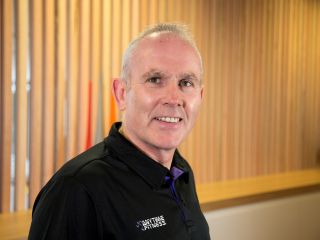
Anytime Fitness Australia has a new chief. Arthur McColl is an experienced fitness industry executive and Franchise Business caught up with him to find out what will change at this 24/7 gym chain.
Chairman and co-founder of Anytime Fitness Australia, Justin McDonell, has a vision for the brand to continue as the largest health club chain in Australia, offering franchisees a long term, profitable and sustainable brand.
“Our core product is convenient fitness, so this will maintain at our core, but you see additional programs to support our members added through face to face connections and technology,” McDonell says.
The strategy for the future includes adding Arthur McColl as CEO.
In 2003, McColl spent three years in Australia as vice president for Living Well, and has left his role as chief operating officer of LA Fitness in the UK to take the reigns at Anytime Fitness.
In the first few weeks of his appointment, McColl has presented plans for the year to franchisees. The strategy is to focus on the following: better processes and data, more innovation, getting better people on board, simplifying systems and creating a bottom-up culture.
FB: What do you bring to the Aussie network of 432 outlets?
AM: “I’ve had 30 years in health clubs but I’m new to franchising. I have a passion for people and the industry, strong integrity and I’m tenacious. I’ve listened to the market, and understand the business – I have a knack of getting to the point, and I build teams and culture.
“I see with fresh eyes. Our strategy is not to drive a huge increase in outlets. We will help franchisees to grow, mature and be successful.”
FB: Anytime Fitness has a strong footprint across Australia. Is there still room for new franchisees?
AM: “There are opportunities, and we certainly have a lot of enquiries. It’s about being smart with new opportunities, following the growth of new housing.
“I’m seeing multi-site management, which is good for everyone concerned. Franchisees see value in moving to two, and then three to five outlets really work because there’s more infrastructure.
“Quite a few have eight to 10 clubs – one owner has just bought the rights to Italy, and another one to Sweden.”
FB: Are franchisees the same now as they were when the business started?
AM: “We have owners from all backgrounds and multiple brands. I’m amazed about the number of experts we have in lots of areas.
“We are seven years old and have a five year agreement. Some owners are looking to renew and move to larger premises, a lot more are looking for multi-units.
“Opening the fourth or fifth outlet is much more challenging than the first three. So we provide business coaching.”
FB: Why did you appoint a head of fitness?
AM: “It’s all in the name. We have people who are incredibly knowledgeable and the Australian user is more fitness savvy than in the UK or US, but we want someone to implement and project manage things like member engagement initiatives, more research, putting the fitness back into the business; team education and engagement, whether it’s through the club environment or a digital channel.
“Sam Theyers worked for me in the UK. He has multi-site club experience he knows how to work in the constraints of the model, and he brings a lot of practical skills.
“He’s also very personable and great on camera, so he’s good for training and presentations.
“How do we educate on how to improve lifestyle? He’s here to drive a fairly tight process.”
FB: What challenges does the business face?
AM: “The challenge is communicating to members or team, to get cut through. And as the club network matures, there’s the challenge to refresh clubs and the space, add more relevant equipment, tweak the brand.
“It’s a challenge not to compete on price. We are moving towards specialisation and personalisation, and need to convince the owners of this.
“People want instant gratification, but one size doesn’t fit. Clients have different needs and reasons. As a brand, there is a real sense of community, and a convenience factor.”
FB: How will you implement change?
AM: “For a start, by not being complacent. We need to improve marketing and improve support but also let franchisees look in the mirror. Clubs need good hygiene, to be welcoming to the customer, to maintain consistency. We need to magnify this message.”
FB: What new products and systems will we see?
AM: “A mobile app is fairly advanced. We’re looking at support for the customer because you can’t out-train a bad diet. We need to look at other issues such as nutrition and stress.
“On the technical side, we’ve been working in the background. And have a very aggressive approach on data so we can keep members informed about keeping fit and healthy.
“And we’re working on a good quality CRM [customer relationship management system].
“Anytime Fitness tries harder than most.”

